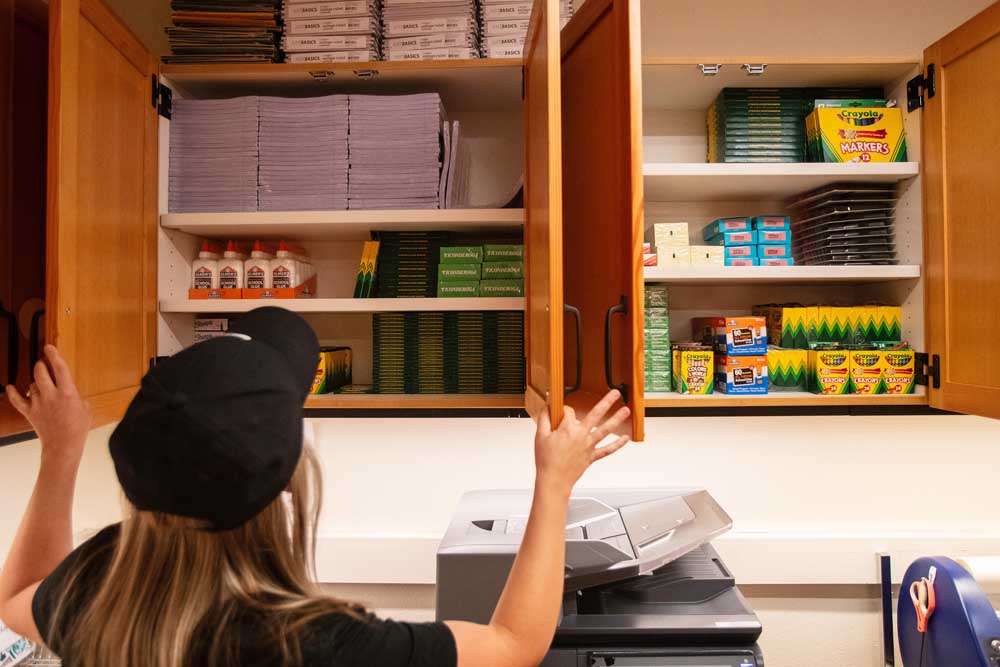Editorial: Back to school and back to basics
Published 5:00 am Tuesday, September 3, 2024

- Jessica Bentley, office manager at Highland Magnet at Kenwood School, shows some of the supplies for students stocked in the school’s supply room recently in Bend.
With the Labor Day holiday in the rearview mirror, students throughout Central Oregon are trudging back to school this week.
The K-12 experience is different for them than it was for our more, shall we say, experienced readership.
Plenty has improved since the days of yore. As Bulletin journalist Noemi Arellano-Summer reported, school supplies are now generally taken care of by the district. That’s a welcome change from a time when the type of Trapper Keeper you pulled out of your backpack carried significant class connotations. Or when you had to waste one of the last days of a fast-waning summer in K-Mart with your mom, shopping for glue and safety scissors. Nothing could be more painful for the child. For adults, the pain was similar when you had to shell out $100 for a graphing calculator you knew your kid would soon lose in the bottom of their locker.
Those pains are mostly past, but there are plenty of downsides to being a student these days. One of the heaviest burdens is that featherweight telephone dangling in their pocket all day, every day.
It holds all the answers to the test, but also proof of all the parties you weren’t invited to. It allows you to see some cool science experiments and the world’s best artworks, but it also allows you to waste the entire day in a game expertly designed to monopolize your attention. The phone has math quizzes and writing prompts, but also gore and pornography and worse. For teen brains, the temptations often prove hard to ignore.
In the early days of digital technology, it seemed that phones, tablets, laptops and more would be an integral part of the K-12 education environment. Google, taking a page from Phillip Morris, sent millions of their Chromebooks into elementary school classrooms that helped get kids hooked.
Teachers saw some initial benefits, but they didn’t last. Most education scores now show students are worse at basic skills like reading, writing and math than they were back in the pen-and-paper era. The COVID shutdowns sure didn’t help. But neither does growing crises around poor attendance and youth mental health. We would argue that cell phones (and the social media inside of them) have a detrimental effect on those last two.
These days, schools are rethinking their relationships with technology. Those relationships are likely to vary, depending on the age of the students and the philosophy of individual principals and superintendents. But we see value in severely limiting the use of technology in classrooms, especially cell phones that are connected to this wider world of social lives and constant distraction.
It won’t just be a learning curve for students. It will also be hard for parents to break the bonds that bind us to our children — both our Verizon family plan and the GPS that allows us to follow their every move. And teachers who rely too much on technology will have to make changes, too. Studies continue to show that too much screen leads to a lack of focused engagement.
As the school bell chimes for the first time for the Class of 2025, perhaps we’re all better off getting back to the basics.
Put those phones down. And get those school-provided pencils sharpened up.








